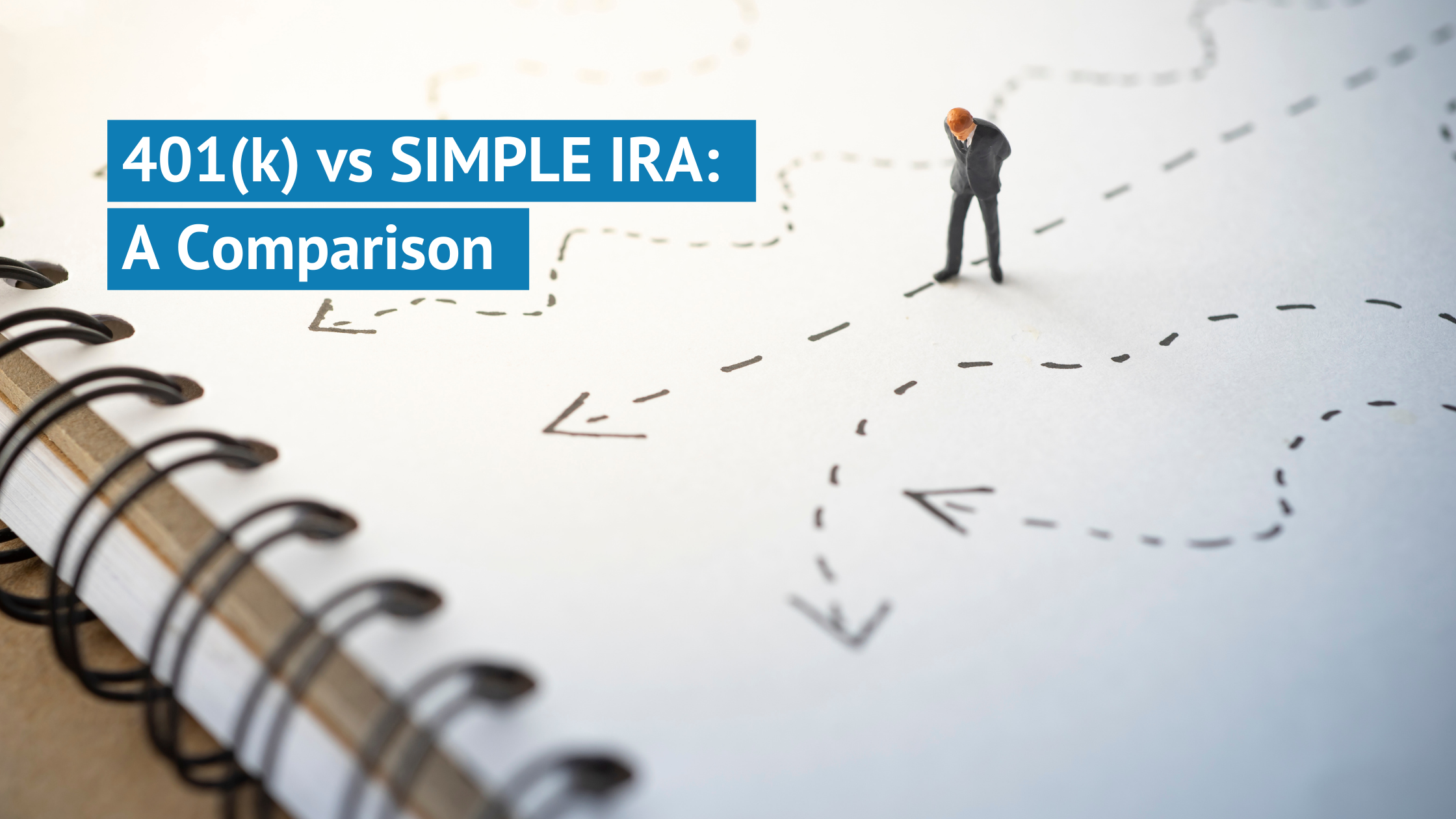The Secret to Boosting Your 401(k) Participation Rates? Automatic Enrollment
April 6, 2023|Luke Matchett

Bottom Line Up Front
- Automatic enrollment gets employees to start saving for their future and increases employee participation in your 401(k) plan
- There are three types of automatic enrollment plans – Basic Automatic Enrollment, Eligible Automatic Contribution Arrangement (EACA), and Qualified Automatic Contribution Arrangement (QACA)
- With the recent passage of the SECURE Act 2.0, employers sponsoring a new 401(k) or 403(b) plan after December 31, 2024, will be required to automatically enroll new employees in the plans at an initial amount of at least 3% of compensation – unless the employee opts out.
If you’re an employer offering a 401(k) plan or looking to start a 401(k) plan, you may be wondering how to increase participation rates among your employees. One way to do so is by utilizing automatic enrollment, a feature that simplifies the process for employees and encourages retirement savings.
With automatic enrollment, you can automatically enroll eligible employees in your retirement plan, with the option for employees to opt out or adjust their contribution levels. Additionally, employers must choose an investment option for the automatic deductions, though employees can elect a different investment strategy than the default option.
There are three types of automatic enrollment plans, each with slight modifications that may be beneficial to your business. However, each plan also has different levels of complexity that require additional record-keeping and administration. By understanding the different types of automatic enrollment plans, you can make an informed decision on which plan is right for your business and employees.
Basic Automatic Enrollment
Basic Automatic Enrollment is the simplest method of enrolling employees in a retirement plan. Under this approach, all employees are automatically enrolled in the plan, with a default contribution rate that is typically around 3% of their salary. If employees do not choose to opt-out or specify a different contribution amount, this default rate is automatically withheld from their paychecks and invested in a standard investment option that is selected by the employer and outlined in the Plan Document.
In essence, standard automatic enrollment ensures that employees are enrolled in the plan unless they actively choose not to participate or select a different contribution rate or investment option. This can help increase participation rates in the plan and encourage employees to save more for retirement.
Eligible Automatic Contribution Arrangement
Eligible Automatic Contribution Arrangement (EACA) is similar to Basic Automatic Enrollment with an added element of complexity. Unlike Basic Automatic Enrollment plans, EACA allows employees to withdraw their automatic contributions within 30-90 days of the first contribution. This withdrawal includes any earnings made from the contributions during the 30-90 day period.
It’s also worth noting employees are 100% vested in their automatic enrollment contributions.
Qualified Automatic Contribution Arrangement
Think of Qualified Automatic Contribution Arrangement (QACA) as the top tier of automatic enrollment. To qualify as a QACA, the plan must meet certain safe harbor provisions that exempt it from annual nondiscrimination testing requirements. This means that the plan can more easily satisfy IRS requirements and avoid penalties.
Unlike Basic Automatic Enrollment plans, Qualified Automatic Contribution Arrangement plans require minimum contributions by the employer. Employers must contribute a 100% match for employee contributions that are less than 1% of their salary and a 50% match for contributions between 1% and 6% of their salary. Alternatively, employers can make a nonelective contribution of 3% of your employee’s salary for all participants regardless of whether or not they contribute themselves.
Overall, a QACA plan can be an attractive option if you’re looking to provide a retirement savings plan for your employees while also receiving certain tax benefits and avoiding annual nondiscrimination testing.
The Impact of the SECURE 2.0 Act on Automatic Enrollment
Signed into law in December of 2022, the SECURE Act 2.0 was designed to boost participation in employer-sponsored retirement plans.
Currently, employers have the option to auto-enroll their employees into their company-sponsored retirement plan. But after the recent passage of the Act, employers sponsoring a new 401(k) or 403(b) plan after December 31, 2024, would be required to automatically enroll new employees in the plans at an initial amount of at least 3% of compensation – unless the employee opts out.
Companies that have been in business for less than 3 years, have 10 or fewer employees, or already have an existing 401(k) or 403(b) plan are exempt from this requirement.
It’s important to also note, automatic enrollment plans must also allow employees to withdraw automatic contributions within 90 days of the first contribution without being subject to early withdrawal penalties.
With pension plans becoming less prevalent, a 401(k) is often the default plan for retirement savings and currently, many people aren’t choosing to contribute as early as they should to save enough for retirement. Making automatic enrollment mandatory will help employees begin saving for their future. It will also increase the plan’s participation rate which can provide tax benefits for the employer and attract and retain more employees.
SECURE Act 2.0 Tax Credit for Automatic Enrollment
Under the SECURE Act 2.0, there is a tax credit available to employers who add automatic enrollment to their retirement plans. This tax credit is worth $500 per year and can be claimed by any eligible employer who adds automatic enrollment to their plan. The credit can be claimed for a period of three years, starting with the first taxable year in which the automatic enrollment feature is added.
Don’t Wait Until It’s Too Late
Each plan has its own unique features and complexity level, so it’s important to understand the differences and choose the right plan with the right features for your business and employees.
As an actuarial firm specializing in third-party administrative services for retirement plans, we understand the importance of providing retirement benefits for your employees.
Our team has extensive experience helping businesses design and implement retirement plans, and we’re here to help you do the same. By partnering with us, you can rest assured that your plan will be compliant with all the latest regulations and tailored to the needs of you and your employees.
Contact us today to learn how we can help you provide retirement benefits for your employees and stay ahead of the curve.

About The Author Luke is a graduate from the University of Connecticut with a B.A. in Actuarial Science. Luke’s interest in actuarial science is rooted in his passion for mathematics and analysis. Here at Odyssey, he designs and maintains client-employee benefit...
More Insights From This author

April 6, 2023
Luke Matchett






